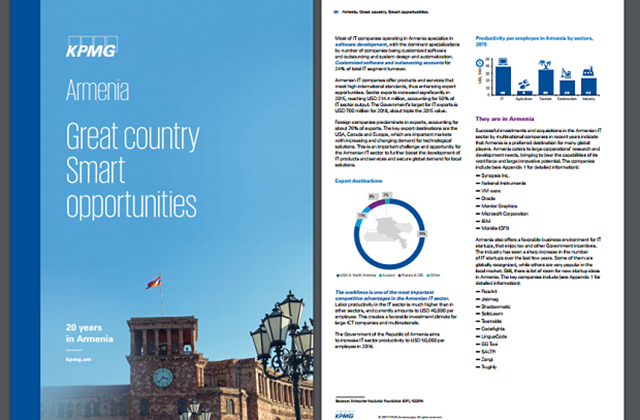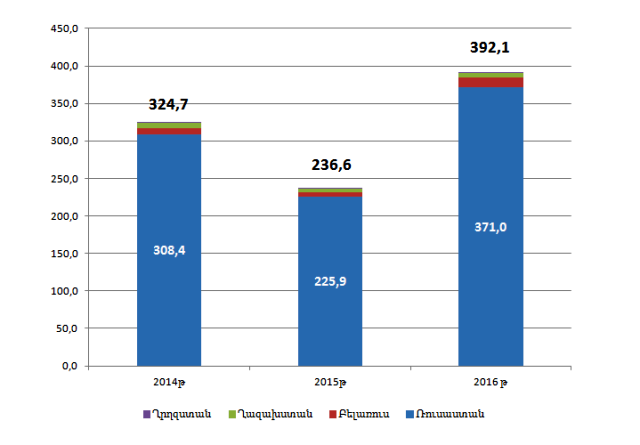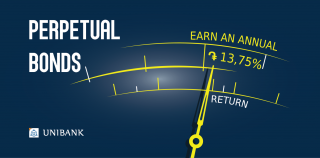
On non-related connections

The barber is asked what the reason of cancer emergence is and he says: from shaving at home. We use this humor to show how the so-called cause-and-effect connection may be distorted and introduced per appropriateness.
Although the example is a humor, it isn’t far from the reality. Moreover, if you say the barber to ground his words, he’ll bring some fresh examples and will give names, who recently died of cancer and have never shaved at the barber. On the other hand, to ground it he will give names of a few healthy people, who are his usual clients.
Such examples are numerous and are an inseparable part of our daily routine.
Of course, at some point this is natural and clear in everyday life. However, in case of official, public statements, or allegations, when any phenomenon or result is conditioned by another phenomenon, result or person, serious analysis should be provided.
Last week “Great country, great opportunities” was published by KPMG, which is a member of the Big Four, covering full information on Armenia’s business and investment environment.
One of the sections refers to Armenia’s membership to Eurasian Economic Union (EEU), which is entitled “Privileges of membership to EEU”. Here those privileges are briefed—market of 180 million, absence of customs duties between member countries and etc. With some reservations this part is ok.
The issue is the statement, through which it’s proven that those privileges work.
It’s mentioned in the booklet, “Armenia has its first touchable results from membership to EEU: export to EEU in 2016 to member countries has grown by 53%, compared with 2015.”
Yes, export from EEU to Armenia has grown by 53%, however, is that the result of membership to EEU? If we weren’t a member, wouldn’t it record such an index?
We recently reflected to export to Eurasian market and stated that growth was recorded mostly on account of improbable growth of export of tomatoes, brandy and a bit clothes and knitwear.
Despite official clarifications the topic of tomatoes casts doubt until now. It should be noted, that 1129.7 tons of tomatoes have been exported to Russia from Armenia in 2015 with customs value of USD 1.5 million, and in 2016—35 842 tons, with customs value of USD 22.6 million. It was even circulated that in fact, under the name of Armenian tomatoes Turkish ones have been exported, however, Minister of agriculture explained this growth by enlargement of greenhouses and other factors. We believe the Ministry of Agriculture, however, the second question arises: what connection has greenhouse economy with EEU? Were farmers waiting for our engagement with EEU to build greenhouses for tomatoes?
Export growth of brandy has simpler explanation. In late 2014 due to Russian ruble depreciation a part of local producers refused to export the goods to Russia, instead it preferred to store and wait for more favorable times. As it’s seen that time has come—it’s 2016, and after certain stabilization of ruble exchange rate was recorded local producers started to export not only production of the same year, but also that of stored from 2015.
Export volumes from Armenia to EEU member countries for 2014-2016 are introduced below.

(purple-Kyrgyzstan, green-Kazakhstan, red-Belarus, blue-Russia)
In 2015 export from Armenia to EEU decreased by about 30%—reaching from USD 324.7 million to USD 236.6 million, from which: export from Armenia to Russia decreased from USD 308.4 million to USD 225.9 million.
Thus, growth of 2016 is impressive for the reason that in 2015 we had almost as much impressive decline. Filling an empty glass with water is more impressive than the half-full one. However, in both cases 1 glass is the result, and before getting proud of it, one should also touch upon who and why has emptied it.
However, the most noteworthy circumstance is that in 2015 we were a EEU member as well. Can we say that export decline was an implication of membership to EEU? As much as we remember, those responsible for the economy bloc were explaining it by other factors (worsening of Russia’s economy condition, ruble exchange rate and etc.), which were to negatively impact despite being a EEU member or not.
In short, desired and “nice” figures shouldn’t be conditioned by factors, which aren’t conditioned by that (or that connection isn’t proven).
To be more impressive for our incumbent authorities, we should remind that until 2007 Armenia had double digit growth after 2008 difficulties were recorded. Until 2008 country’s president was Robert Kocharyan, and after him—Serzh Sargsyan.
Can we say that we are grateful to Robert Kocharyan for the years of economic growth and Serzh Sargsyan is the guilty for economic failures? Of course, not. As in the 2000s growth in price for oil and Russia’s economic uplift, and then world economy crisis or sanctions imposed against Russia from 2014 and drop in price for oil have no connection to the circumstance who Armenia’s president is.
Moreover, according to some economists deep decline of 2009 was the very implication of former double digit growth, as accentuation was made in the field of construction.
Thus, it’s better not give way to seduction and at least indirectly not attribute to undesired people or realities. As it may have a boomerang effect, mayn’t it?
By Babken Tunyan























